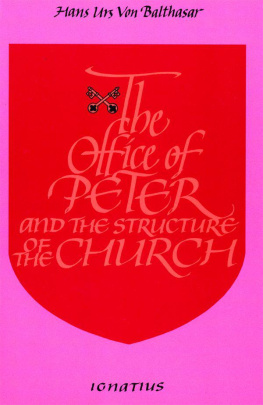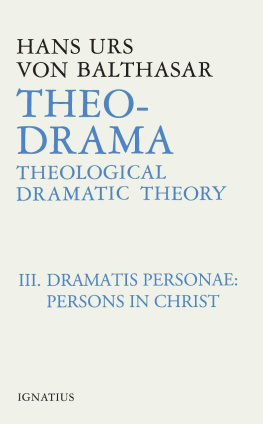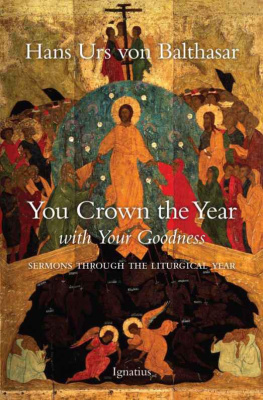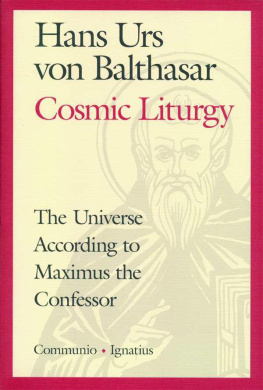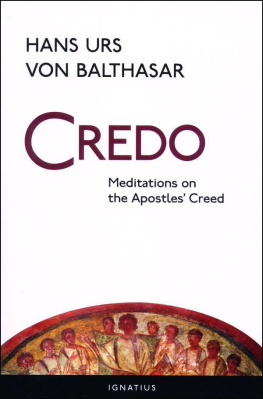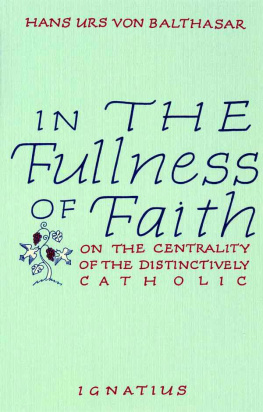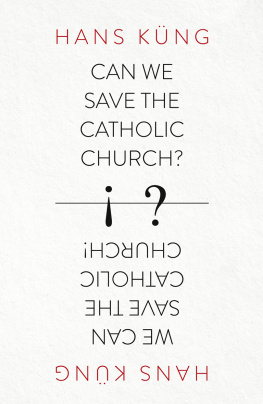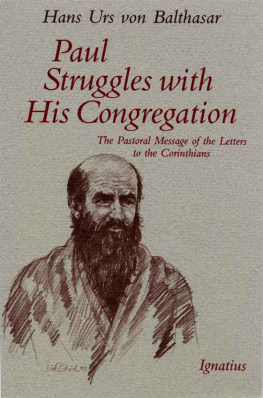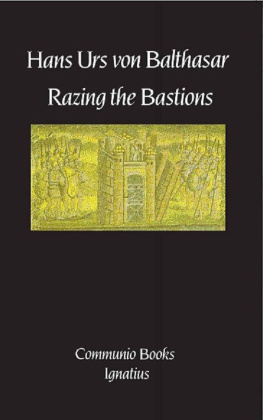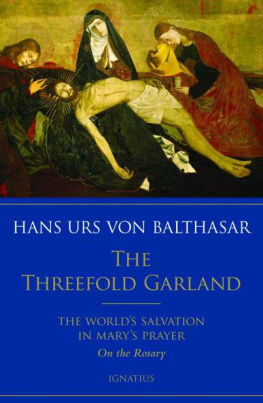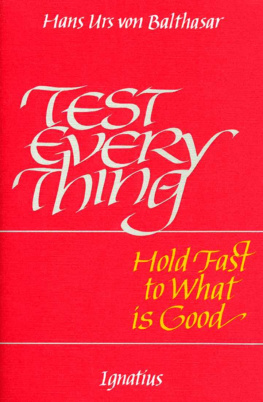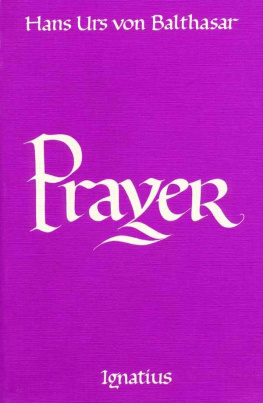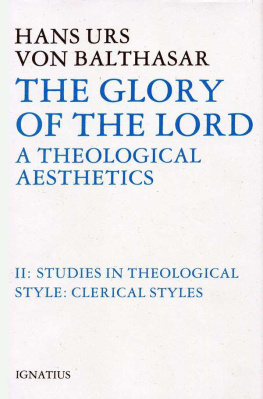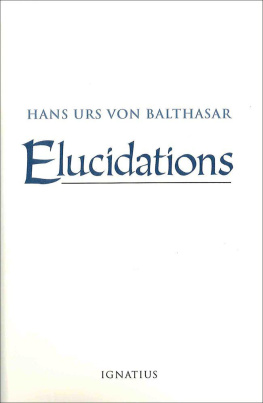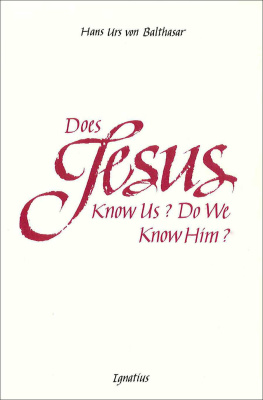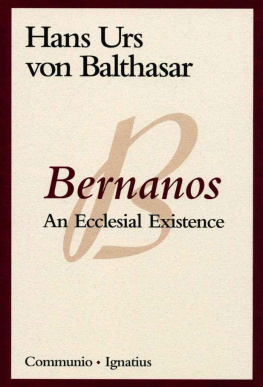The Office of Peter
and the
Structure of the Church
Hans Urs von Balthasar
The Office of Peter
and the
Structure of the Church
SECOND EDITION
Translated by Andre Emery
IGNATIUS PRESS SAN FRANCISCO
Title of the German original:
Der antirmische Affekt
1974 Verlag Herder KG, Freiburg im Breisgau
Reprinted by permission of
Johannes Verlag, Einsiedeln, Switzerland
Cover by Victoria Hoke Lane
With ecclesiastical approval
1986, 2007 Ignatius Press, San Francisco
All rights reserved
ISBN 978-1-58617-228-2
Library of Congress Control Number 2007933594
Printed in the United States of America
Dedicated to
Dr. Magdalena Hutton
in gratitude
Contents
The Circle Closes
a) A Pope, But Not This One
b) A Papacy As It Was Before
c) Peter, but No Pope
The Mysterium of the Church
a) Not in Isolation
b) Realsymbolik
c) Present Reality in the Church
a) Collegiality and Primacy
b) Love, Law, Power
c) Office and the Holy Church
a) The Liberating Embrace
b) ImmaculateIndefectibleInfallible
c) Uniting and Vanishing
a) One for All
b) Mysterium and Definition
c) Consent and Risk
a) The Beginning
b) The Narrows
c) Toward Balance
Living the Miracle
Foreword to the Second German Edition (1989)
In the summer of 1987 the author went on vacation with the plan of revising this book for a new edition. He intended to rewrite the first part, expand the last part and give another title to the whole work, which in German had been entitled Der antirmische Affekt [The anti-Roman attitude], something more along the lines of the subtitle Wie l sich das Papsttum in der Gesamtkirche integrieren .
Various courses with young confreres were more important to him. The book remained as it was. A few pencilled notes in the text, especially in the Table of Contents, give some idea of the direction the author had planned to take with these additions. For instance, in Part II, The Mysterium of the Church, in the section The Real Christ in His Constellation the idea of communio was supposed to be developed more thoroughly. And in the section The All-Embracing Motherhood of the Church the name John is inserted in Chapter 3 alongside of Mary and Peter, and later at the conclusion an added subsection (d) entitled Two Priesthoods was foreseen, probably the product of his study at that time of the writings of Marie de la Trinit, O.P. Similarly, a subsection (d) was indicated for Chapter 4, The Petrine Office as the Concrete Representation of Christ, with the following note: Here the principle of obedience as sacrificial love should be treated. The Church crucified and crucifying (the saints).
Now [because Hans Urs von Balthasar died before these plans could be carried out] the book must be published in its previous form. As an introduction it has been prefaced with an essay on the same theme that the author wrote for the sixtieth birthday of Joseph Cardinal Ratzinger. We thank His Eminence for his kind permission to reprint this essay from his Festschrift entitled Weisheit GottesWeisheit der Welt [Gods WisdomThe Worlds Wisdom].
Introduction to the Second German Edition (1989) The Anti-Roman Attitude: The Catholic Church Self-destructing
The purpose of this essay is not to repeat what has been said in the book Der antirmische Affekt [The Office of Peter , first edition], a book that was difficult to sell, since no one stricken with the illness would have bought it. Moreover the illness has made such progress meanwhile that those who are not stricken with itwhether they are aligned on the left or the rightare considered by most people to be outsiders. This is so because they continually confuse or equate the office and the person, which is basically the Donatist heresy unmasked by Augustineprobably the greatest service that he ever rendered. But today, when psychology has widely popularized the notion that nobody has authority except the one who manages to get it for himself, and this maxim is applied to theological authority, we revert, practically speaking, to a position prior to Augustines achievement, since he, once hailed as the spiritual Father of the West, has become the whipping-boy of many contemporary theologians.
The impression that one gets in surveying the worldwide situation of the Catholic Church is above all that Catholics, especially the theologians, pay no heed whatsoever to the consequences of the aforementioned attitude. The nave equation of the concept of freedom with the right to universal criticism, also and especially of every form of secular and spiritual authority, has become common property in todays world, even in those regions ruled by tyranny and despotism, to such an extent that this habit of mind, fueled by the press and the mass media, is practically never questioned by anyone; it belongs to the history of freedom in the modern era. We will say no more about the secular realm and the prevailing democratic trends therein (assuming that they are genuine); there is no confusing it with our topic, namely, the realm of the mystery of the Church.
A propos of this mystery, we can distinguish three aspects: (1) the mystical [ mysterialen ] character, which is hidden in the midst of a world that does not comprehend it; (2) the side that reveals itself therein, to the worlds amazement, with a certain plausibility and (3) the fatal danger when Catholics forget or disregard either one, the mysterious interior aspect or the apparent external aspect of the mystery. These aspects shall be considered one after the other.
I
The transfer of Christs pastoral ministry to Peter cannot be expurgated from the Gospel, without prejudice, of course, to the ministerial power derived from Christ that belonged to the other apostles and to their successors in the episcopate. The fact that this transfer of ministry cannot possibly be the institution of a mere office becomes quite clear when we consider, first, that Christs ministerial authority (the high priesthood) consisted of his privilege and ability to give his life for his sheep, and second, that as a condition for the transfer of the ministry of the Good Shepherd to Peter, greater love (demanded three times) is required, and furthermore the promise that this union of ministry and love is (analogously) feasible is guaranteed by the prophecy of Peters crucifixion. Taking the Apostle Paul as an example, it can be demonstrated exactly that such a state of being crucified is required of someone who holds ecclesiastical office and is accomplished in him, whereby there is no question whatsoever of a separation of office and person, and that the Apostle is equally conscious of both truths: that it was not, for instance, Paul [who was] crucified for you [1 Cor 1:13] but nevertheless in a miraculous way, by virtue of incomprehensible grace, he can complete by his suffering and humiliation what is lacking in Christs [superabundantly sufficient] afflictions [Col 1:24]. That is to say that the structure of ecclesiastical ministry can be made comprehensible only in terms of Christs salvific work on the Cross, and thus shares most intimately in the mysterious character of the Cross and represents one aspect of the reality of salvation through the ages, for which reason another aspect of the mystery, too, the abiding presence of Christ in the Holy Eucharist, remains indissolubly bound up in this ministerial aspect. The two mysteries, inseparable as they are, serve the unity of the Church which Christ so ardently desired and begged the Father for. And the other major components that build up the Church are connected also with this structure of unity: apostolic preaching, the unity of which is guaranteed both by the interpenetration [ Durchdringung ] of Scripture and Tradition and the ministry itself, as Dei Verbum , the Dogmatic Constitution on Divine Revelation, states at the conclusion of Chapter 2: It is clear, therefore, that, in the supremely wise arrangement of God, sacred Tradition, sacred Scripture and the Magisterium of the Church are so connected and associated that one of them cannot stand without the others. Working together, each in its own way under the action of the one Holy Spirit, they all contribute effectively to the salvation of souls.
Next page
